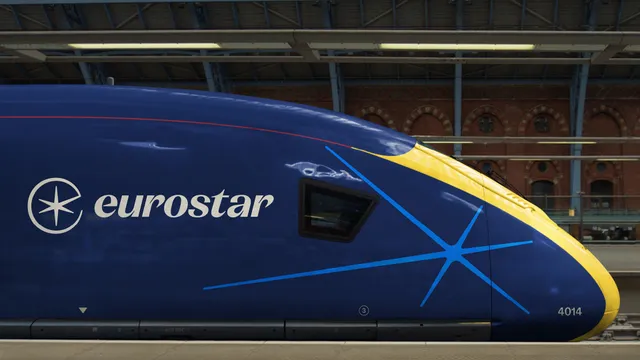UK-Europe Rail Wars: Eurostar’s big bet and the new challenger lineup
Eurostar is facing challengers to control the UK <> European rail network

Eurostar is facing challengers to control the UK <> European rail network
Eurostar’s had a pretty sweet run since the 1990s, shuttling millions between London, Paris, Brussels, and Amsterdam. But with new incentives from London St Pancras Highspeed (LSPH) – 50% off track charges in year one, 40% in year two, and a £1-per-passenger bonus for growing capacity – the market is finally opening up.
“Finally, a green signal for competition. The Temple Mills depot is the only facility in the UK which can accommodate European-style trains and claims suggesting it was at capacity have been blocking Virgin from coming to the line." - Virgin Group Spokesperson
The challengers are lining up:
- Virgin is back, raising £700M to launch London-Paris/Brussels/Amsterdam routes by 2026 and choosing to take Eurostar head-on
- Evolyn (Spain) has ordered a dozen-plus Alstom trains for UK-Europe services
- Gemini Trains, a UK startup, is promising to “change the face of European rail” with new routes and a fresh approach
- and more...
Eurostar’s response: 'Go big or go home'
Eurostar isn’t just sitting back. They’re rolling out a new fleet of 50 trains and aiming to grow from 18.6M to 30M customers by 2030. That’s a massive jump, and they’re betting on a “customer experience overhaul”, i.e. digital upgrades, new lounges, and more flexible ticketing.
But here’s the tension: Eurostar fares are often much higher than those on comparable EU high-speed routes, and some reports suggest they’re running below capacity, especially post-pandemic.
The big question is: will these new discounts make tickets more affordable or fund shinier trains?
Why this matters (and not just for the train nerds)
This isn’t just about who gets to run trains through the Channel Tunnel. It’s about the future of sustainable, affordable travel in Europe.
- Rail is green. Trains emit about 96% less CO₂ than planes on these routes. If we’re serious about climate goals, getting more people off planes and onto trains is a no-brainer.
- Competition could mean lower prices. More operators should, in theory, drive down fares and make cross-Channel travel accessible to more people.
- But new entrants face huge upfront costs. Evolyn’s Alstom trains aren’t cheap, and there’s no guarantee that savings will be passed on to passengers.
My take: The real battle is for the customer
Eurostar’s customer experience push feels a bit defensive to me. They know Virgin’s brand power and Gemini’s startup energy could shake things up. The real winners will be the operators who:
- Get pricing right with dynamic, airline-style fares that could make rail more competitive and fill more seats.
- Make journeys seamless by integrating with multi-model journeys (buses, e-scooters, and local transport) so you can book door-to-door, not just station-to-station.
- Reward loyalty by offering perks that actually matter to frequent travellers, like flexible tickets or lounge access.
- Sustainability as a selling point for climate-conscious travellers is evaluated based on green credentials (and maybe even offering carbon-offset subscriptions). There is an opportunity to win over a new generation of travellers.
- Expanding routes and connections beyond the classic London-Paris-Brussels corridor. Virgin and Gemini are aiming to do just that, and the possibilities are wide open if the infrastructure keeps up.
And let’s be honest: if Eurostar wants to hit 30 million customers, they’ll need to do more than simply buy new trains. They’ll need to develop a superior customer experience and improve affordability to remain the go-to choice for travellers crossing the Channel.
What could go wrong?
- Capacity vs price. Eurostar is running at 50% capacity, but tickets are still expensive. If new entrants can undercut them, we might see a real price war. There’s also a risk that LSPH’s incentives boost operator profits instead of lowering traveller fares.
- Regulatory headaches. Running trains across borders in Europe is still a bureaucratic nightmare. New entrants will need deep pockets and patience, combined with a strong collaboration mentality.
- Educating (and convincing) customers. UK travellers are used to flying. Convincing them to switch to rail – especially if prices don’t drop – won’t be an easy task.
As someone who enjoys a good train ride (cheap fare, table seats, and fast direct routes) and a good market shake-up, I’m excited to see how this plays out.
Will Eurostar’s big investment pay off, or will Virgin and the new kids on the block steal the show? Will we finally see affordable, green, and genuinely enjoyable cross-Channel travel?


